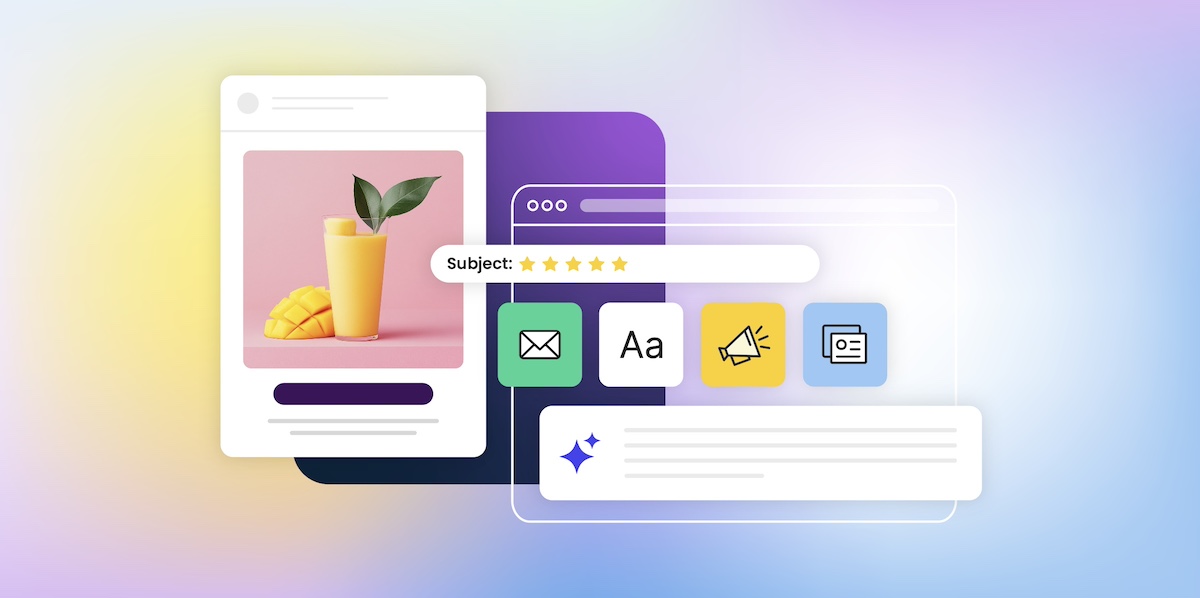
A well-crafted email is never just one thing—it’s a collection of carefully constructed sections and elements that work together. From the subject line that earns the open to the call to action that seals the deal, and everything in between, each part plays a role. Because when these parts of an email are optimized smartly and strategically, your emails don’t just look good, they have the power to drive real action.
No matter the type of message you wish to send—be it a promotional message, a welcome email, or a re-engagement campaign—understanding how each component functions, and how to make it work harder, is how to really get the results you want. And that’s what we’ll be tackling today: how to make each part of your email work for you so that it really gets the job done.
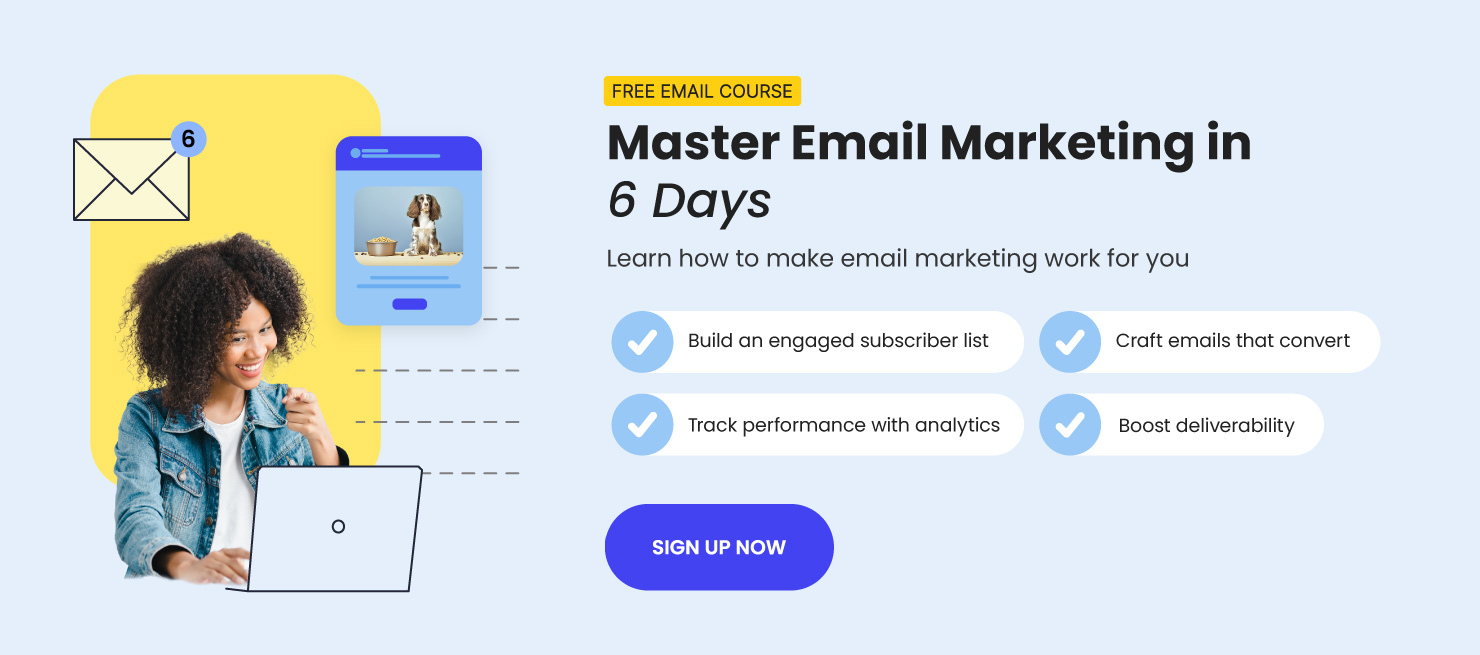
The Essential Parts of an Email Message
At first blush, an email might seem simple. And it could be simple. But there’s certainly a whole lot more to a high-performing email: beyond words, there’s a structure designed to guide the reader, build credibility, and lead them to a desired action. It’s strategic, multifaceted, and when everything comes together, more valuable than the sum of its parts.
So let’s explore the anatomy of the seemingly humble email. Here are the essential parts of a complete, fully baked, high-converting email message:
- 1. Subject line – The first impression and open-rate driver
- 2. Preheader text – A text preview that complements the subject line
- 3. Sender information – Establishes trust and recognition
- 4. Recipient information – Clarifies who sees what, and why it matters
- 5. Header – Visually sets the tone for what follows
- 6. Salutation – Establishes voice and connection
- 7. Personalization – The key to making your email feel less anonymous
- 8. Body copy – The core message that informs or persuades
- 9. Call to action (CTA) – Directs readers toward a specific next step
- 10. Closing – Reinforces tone and wraps up with intent
- 11. Signature – A trust-building bookend
- 12. Social media links – Boosts credibility and brand awareness
- 13. Footer – Includes key business and legal information, as well as an unsubscribe option
- 14. Attachments – Optional, of course, but can add value, and it’s important to actually attach!
Each of these elements contributes to the overall success of your email. Miss one, and you risk a weaker message. Get them all right, and your email becomes a powerful tool for engagement and conversion. Now let’s unlock the secrets behind each component.
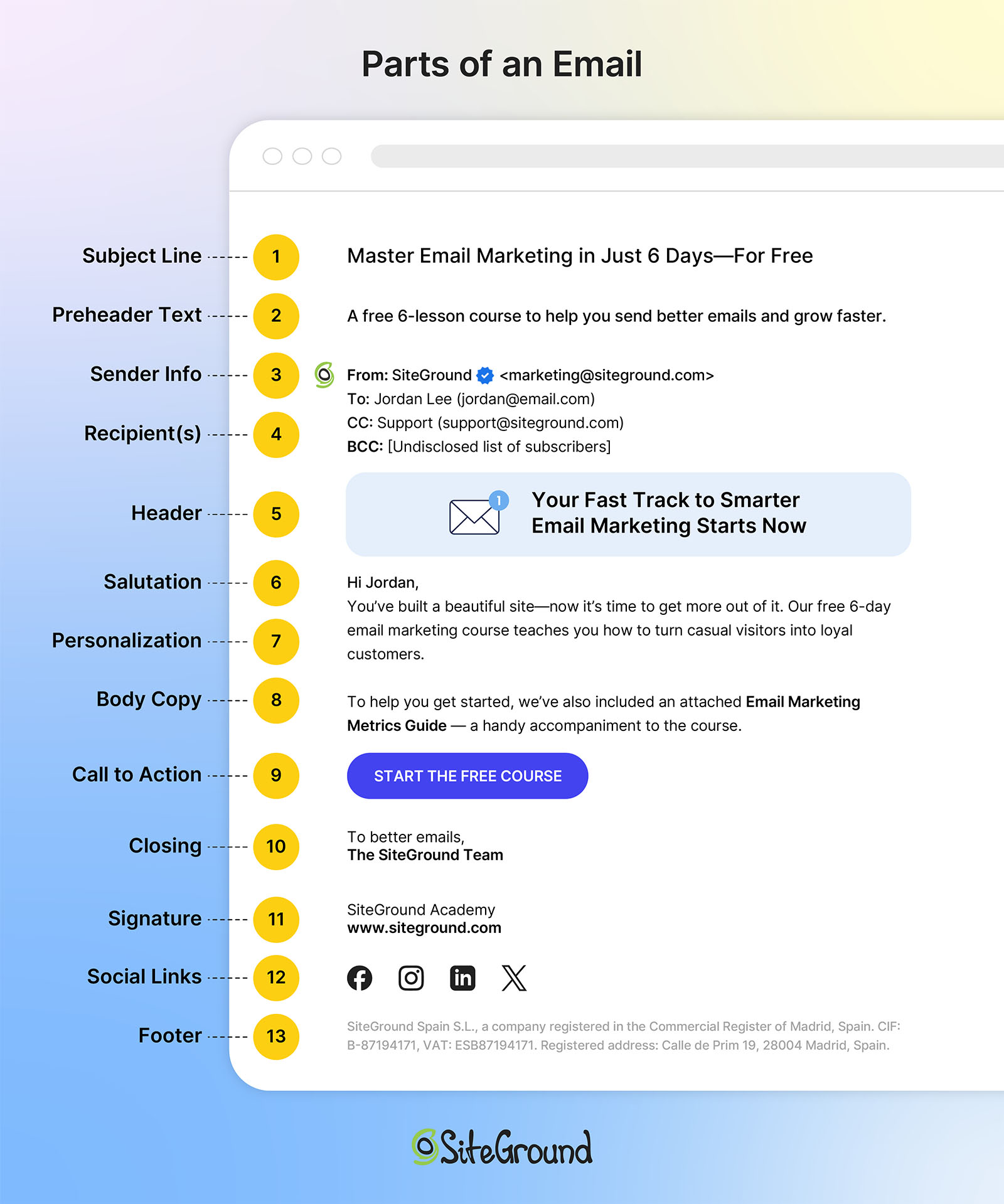
How to Make Each Part of an Email Work for You
Now that we’ve outlined the key parts and sections of a complete email, it’s time to dig into how to make each one work harder so that every part of the email isn’t just present, but purpose-driven. Whether you’re aiming to increase open rates, improve click-throughs, or drive conversions, each section of your email should support your end goal.
Let’s start at the top—literally—with the parts of an email your reader sees first.
1. Subject Line
Your subject line is your email’s decision point. Do they open it or do they not? Not only that, but it frames the entire message and primes your audience’s mindset. A good email subject line aligns with the intent of your campaign, nudges curiosity, and connects to the outcome you want.
Strategic tips:
- Focus on the benefit or value for the reader
- Use emotional triggers (urgency, exclusivity, curiosity)
- Keep it concise—aim for under 60 characters so that it shows up on mobile
- Test subject lines against different segments or goals
Examples:
- “One Day Left: Claim Your Spot Before It’s Gone” (creates urgency)
- “You Asked, We Delivered: New Features Inside” (builds curiosity and relevance)
- “20% Off for Returning Customers Only” (personalized + exclusive)
- “A Faster Way to Manage Your Workflow” (value-focused)
2. Preheader Text
Think of the preheader text as a second subject line—it’s an extra way to persuade your reader to open. With this added precious space, you’ve got a chance to support the hook, preview what’s inside, or clarify your message.
Strategic tips:
- Expand on the subject line or deliver a complementary message
- Reinforce your call to action or tease what’s coming
- Match tone and intent to the subject line and body copy
Examples:
- Subject: “Big Improvements Just Dropped 🎉”
- Preheader: “Take a look at what’s new—and how it makes your workflow smoother.”
- Subject: “Don’t Miss Out: Sale Ends Tonight”
- Preheader: “Save 25% on everything in your cart before midnight.”
- Subject: “Welcome to the Team”
- Preheader: “Let’s get you set up—your first steps are inside.”
It’s worth noting that as inbox functionality evolves—especially with the rise of AI email summaries—some have questioned whether preview text will still matter. While it’s true that AI may reduce its visibility in certain cases, you’d still be wise to optimize this space. Strong preview text remains a valuable opportunity to drive opens and engagement, regardless of changing trends.
3. Sender Details
Before your email is even opened, your sender name and address play a huge role in whether your message gets noticed or ignored. People are far more likely to open emails from sources they recognize and trust.
But there’s a technical side to trust, too. Behind the scenes, domain authentication (like SPF, DKIM, and DMARC) signals to inbox providers that your email is legitimate. Without it, even a great sender name might land in spam—and, notably, your email deliverability could take a hit. So it’s important to pay extra attention to sender details for a variety of reasons.
Strategic tips:
- Use a recognizable name (brand, person, or both)
- Avoid no-reply addresses, which feel impersonal or unhelpful
- Stay consistent across campaigns to build familiarity
- Change things up when necessary—sending an occasional email directly from your founder, for example, could elicit more opens
- Ensure your domain is authenticated to protect your brand and improve deliverability
SiteGround, for example, takes email deliverability seriously—optimizing everything from server reputation to DNS settings to help ensure your messages actually reach the inbox. With built-in support for SPF, DKIM, and DMARC authentication, plus proactive IP reputation management, SiteGround gives senders a strong foundation for email success right out of the gate.
4. Recipient Info
Sending an email isn’t always as basic as just dropping in an email address and hitting send. The way you use To, CC, and BCC can shape how your message is perceived, and who acts on it.
To: The Primary Audience
This is where you put the main person or people you want to engage with your message. If you want someone to read, respond, or take action, they should be in the To field. Think of this as your email’s “front row” audience.
CC (Carbon Copy): Keeping Others in the Loop
Use CC to include people who should be aware of the conversation but aren’t expected to respond or take action. It’s a way of saying, “FYI, you might find this useful.” This keeps communication transparent but avoids overwhelming the primary recipient with unnecessary replies. CC is especially common in cold emails, where senders might copy a manager, colleague, or mutual contact to lend context or credibility.
BCC (Blind Carbon Copy): Privacy and Discretion
Recipients in the BCC field receive the email without other recipients knowing. This is perfect for sending announcements or newsletters to large groups without exposing everyone’s email address. It also prevents reply-all chaos and keeps the list confidential.
5. Email Header
Your email header isn’t just decorative; it sets expectations for what’s to come and reinforces your brand from the very first scroll. In it, you might include your logo, a design, and even headline or call to action.

Strategic tips:
- Keep it clean, on-brand, and mobile-friendly
- Include your logo to build instant recognition
- Use a banner image that reinforces your message or theme
- Add a headline or tagline when it supports the content
Examples:
- Brand + Context: Logo with “This Month’s SEO Trends & Insights” underneath (sets expectations and connects to the content)
- Minimalist: Just your logo, no text (works well for quick updates or personal messages)
- Event Follow-Up: Branded banner with “Thanks for Attending Our AI in Marketing Webinar” (immediately reminds the reader why this email matters)
- Role-Based Newsletter: Logo plus “Resources for Product Designers” (reinforces custom content)
6. Salutation
The salutation is your first real chance to speak directly to your reader and make a proper connection. It also subtly establishes the tone—whether friendly, formal, or conversational—and can help build rapport right away.
Strategic tips:
- Match your salutation to your brand voice and audience expectations
- Use the recipient’s name when possible for a personal touch
- Adjust formality based on context (that is, “Hi, Joan” versus “Dear, Mr. Nakamoto”)
- Consider including a brief, warm opening line to engage readers immediately
Examples:
- “Dear, Dr. Smith,” — respectful and formal, ideal for professional or academic audiences
- “Hello, Sarah, hope your week is going well!” — conversational and friendly, adds warmth
- “Greetings, Marketing Team,” — useful for group or role-based emails
- “Hi, Kara,” — casual and approachable, great for B2C or informal brands. Or, as seen in the example below, add an exclamation point for an extra touch of friendliness.

7. Personalization
Personalization goes beyond using a first name. It’s about showing your audience that you understand their context, preferences, and needs. Even small, thoughtful tweaks can make your message feel more custom and relevant.
Strategic tips:
- Use dynamic fields like name, company, or location
- Reference recent activity (event participation, downloads, interests)
- Segment based on behavior, interests, or email customer journey stage
- Adapt tone, product suggestions, or CTAs to match the segment
Examples:
- “Thanks for joining us at [Event Name]—here’s what’s next” (follow-up to an event registration or attendance)
- “You downloaded our Remote Work Toolkit—now try these tools” (lead nurturing email based on a resource download)
- “For Marketing Managers: Our top tips on email segmentation” (targeted content aligned with the role identified during sign-up)
- “Hi Sam, great to have you as part of our webinar” (personalized webinar follow-up that references participation)

8. Body Copy
The body of your email is where you deliver on the promise made by your subject line and header. This is where your email copywriting has a chance to engage, inform, and persuade, so every sentence should have a purpose.
Strategic tips:
- Focus on one clear message and structure your content around it to avoid overwhelming the reader.
- Write in a natural, conversational tone, like you’re speaking directly to one person.
- Break up text with short paragraphs and bullet points to make your email easy to scan.
- Highlight the benefit to the reader, not just the product’s features—make it about what’s in it for them.
- Use real examples or mini-stories to illustrate your point and keep people interested.
- Add trust elements, like testimonials or data points, to reinforce credibility and drive action.
If you’re feeling stuck or just need a little help writing your email copy, there are tools that can make the process easier. SiteGround Email Marketing, for example, includes a built-in AI email writer that helps you craft clear, compelling messages in less time.
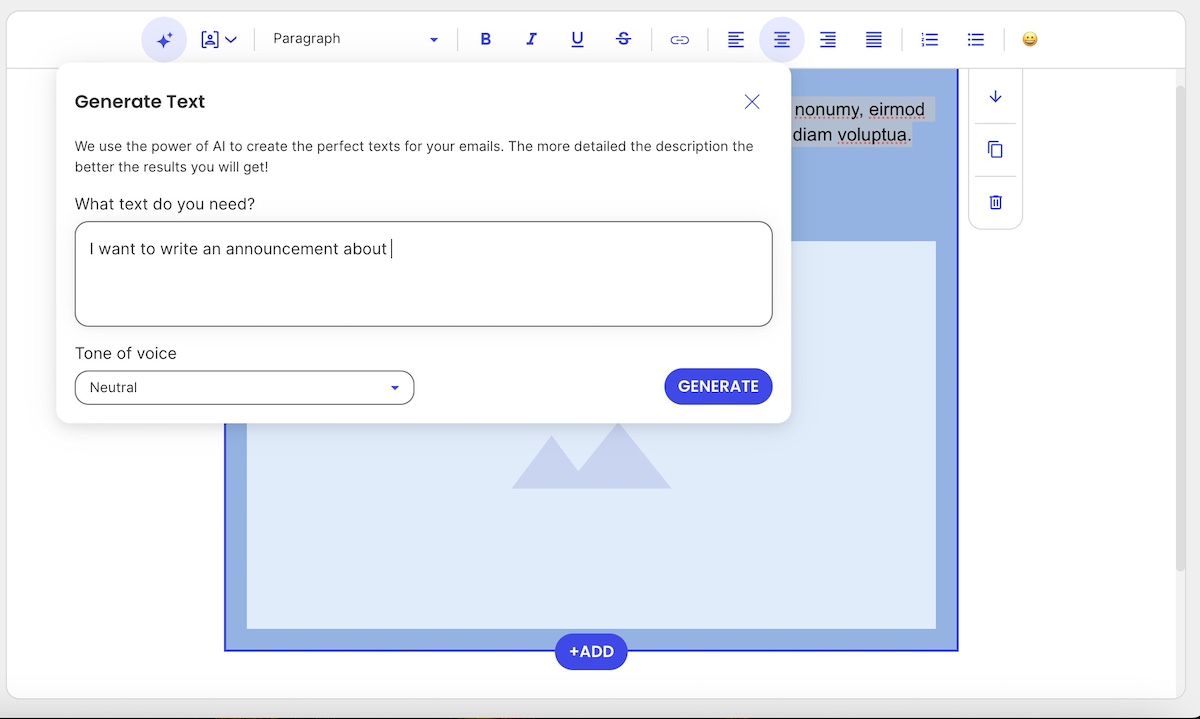
9. Call to Action
Your email’s call to action is the driving force behind your message’s success. A good CTA guides your reader toward the next step, whether that’s signing up, downloading, buying, or simply learning more.
Strategic tips:
- Use strong, direct verbs that tell your reader exactly what to do—think “Start your free trial,” “Shop the sale,” or “Book your spot.”
- Make your CTA button visually stand out with color, size, and spacing that draws the eye.
- Place CTAs where they make the most impact—typically near the top (above the fold), again in the middle, and once more at the end.
- Stick to a single goal: one primary CTA per email is usually most effective. If you include more than one, make sure they support the same action.
- Cater your CTA to the audience—reference their interests, behavior, or where they are in the buyer’s journey to make it more relevant and persuasive.
Examples:
- After introducing an event: “Reserve your spot now” button right after the event details
- In a personalized email for a specific job role: “Explore resources for product managers” link embedded after relevant content
- For selling a product: A brightly colored “Start Shopping Now” button immediately following the promotion description—like seen in the example below.
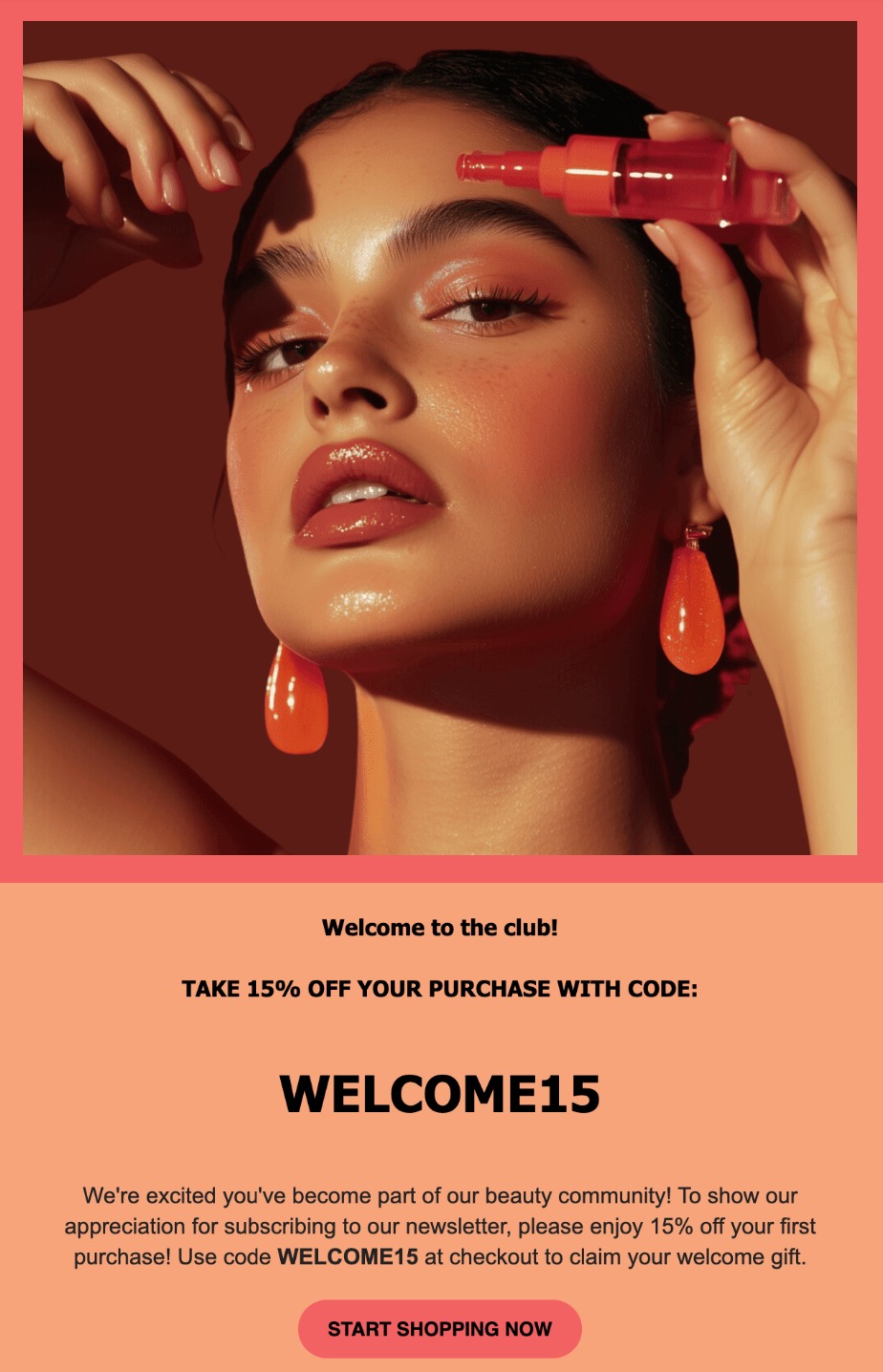
10. Closing
The closing is your final send off. Though it might seem trivial, a strong one can reinforce your message, keep the tone consistent, and leave the reader feeling confident about what to do next.
Strategic tips:
- Match the tone of your closing with the rest of the email (such as professional, friendly, or casual)
- Include your name or your team’s name to humanize the message
- Reinforce your CTA or main takeaway just before signing off
- Add a subtle reminder of your brand voice and values
Examples:
Formal and professional:
“Looking forward to your participation.
Best regards,
The Events Team”
Friendly and helpful:
“Can’t wait to see what you think.
Cheers,
Luisa from BrightWorks”
CTA-focused:
“Ready to dive in? Click below to get started.
Talk soon,
The Growth Team”
11. Signature
The closing may be the final line of your message, but your email signature is where you solidify who the message is from and how readers can connect with you or your company. It adds context, credibility, and consistency.
If the email is coming from a person, the signature typically includes:
- Full name
- Job title
- Company
- Website and contact info
- Optional photo or logo
- Links to relevant social media
If the email is from a company or team (rather than an individual), it should still feel warm and professional. A company signature might include:
- Team or department name (such as, The SiteGround Support Team)
- Company logo
- Website and contact email
- Optional CTA or tagline
12. Social Links
Including social media links isn’t just about growing your follower count; it’s about building trust and giving readers more ways to connect with your brand.
Strategic tips:
- If you add icons, consider making them either neutral-colored (as seen below) or within your own branding (versus the original social media branding colors, which might clash with your email marketing design.)
- Make sure the tone and content on your social pages match your brand voice
- Link to relevant channels: LinkedIn for B2B, Instagram for lifestyle brands, etc.
- Use UTM parameters to track traffic from email to social

13. Footer
It’s easy to overlook, but the footer plays a big role in compliance, clarity, and trust. It’s where readers go to verify who you are, and how to opt out if they need to.
Strategic tips:
- Always include your company name, physical address, and a clear unsubscribe link (these are essential email marketing best practices in order to comply with regulations)
- Add contact information or a support email for questions
- Keep the design clean and unobtrusive, but still on-brand
- Consider including legal disclaimers or certifications if relevant
14. Attachments
Attachments can add value to your email, but only when they’re used strategically and clearly support your message.
Strategic tips:
- Only attach files that are necessary and expected (like a brochure, event agenda, or whitepaper)
- Mention the attachment in the body of your email so the recipient knows what to look for
- Keep file sizes small to avoid deliverability issues
- Use clear, descriptive file names (because how often have you downloaded something and then struggled to identify it later due to its ambiguous name?)
- For better tracking and security, consider using a download link instead of an attachment
Beyond Just a Single Email: The Bigger Sending Picture
Mastering the components of a high-converting email is important, but one message doesn’t stand alone. In business, every email you send becomes part of a larger story you’re telling your audience. With that in mind:
Think in Journeys, Not One-Offs
Whether you’re welcoming a new subscriber, following up after a download, or nudging someone toward a purchase, your email’s structure and content should reflect where the recipient is in their customer journey. The tone, CTA, and overall copy of each email should evolve based on what they’ve already done (or received)—or haven’t.
Segment to Stay Relevant
Sending emails that speak to where the customer is at means that you don’t send the same message to everyone. To do this, segment your list based on behavior, preferences, or actions, and customize each part of the email accordingly. A subject line that resonates with a CFO may fall flat for a marketing manager. A call to action that works for a long-time customer might not land the same way as it would for someone who just discovered your brand. This is part of bringing personalization to life, beyond just someone’s first name.
Automation Ties It Together
The idea here is to think about the bigger email picture, beyond just a single message with all its email parts. That’s where smart email automation comes in. It allows you to turn individual messages into thoughtful sequences—each one leveraging the email structure we’ve covered, and each one moving the recipient closer to a goal.

Connecting All the Parts for Stronger Email Results
As you can see by now, truly successful emails aren’t just well-written, they’re well-constructed, with each part getting special attention. The whole anatomy, from subject line to footer, plays an important role in how your message is received and acted upon. So when you understand the purpose of each component, you can optimize with intention, and transform every email into an effective tool for engagement, brand-building, and conversion.
Want to bring all these best practices to life without starting from scratch each time? SiteGround Email Marketing gives you everything you need to build beautiful, high-performing emails—fast. With customizable templates, intuitive design tools, and built-in features for personalization, segmentation, and automation, you can craft messages that don’t just look good—they get results. Try it out and see how easy powerful email marketing can be.


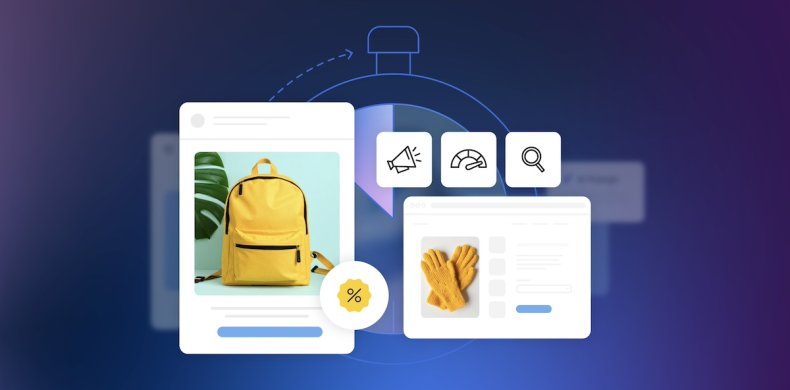
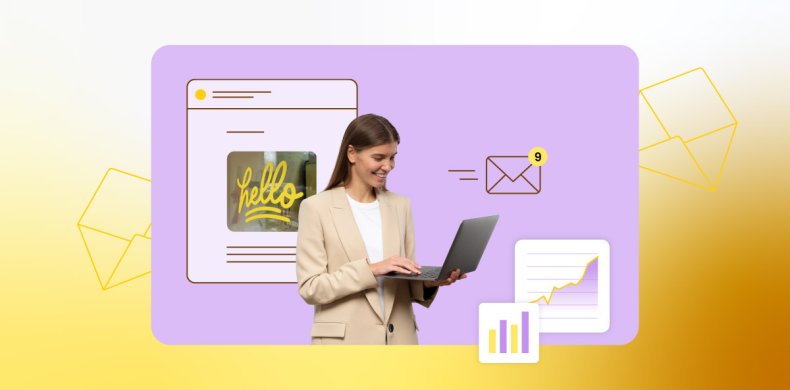
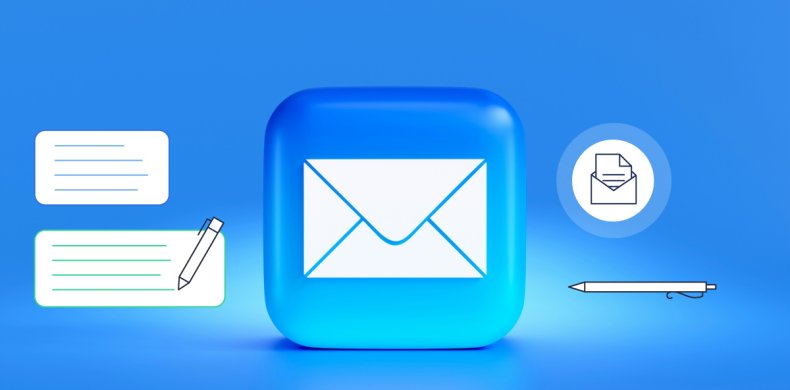
Comments ( 0 )
Thanks! Your comment will be held for moderation and will be shortly published, if it is related to this blog article. Comments for support inquiries or issues will not be published, if you have such please report it through our official channels of communication.
Leave a comment
Thanks! Your comment will be held for moderation and will be shortly published, if it is related to this blog article. Comments for support inquiries or issues will not be published, if you have such please report it through our official channels of communication.